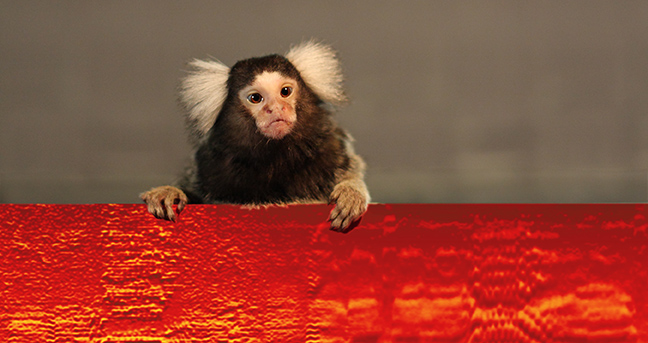MIT Colloquium on the Brain and Cognition
"Marmoset as a model system for studying the neural basis of audition and social interactions"

SPEAKER: Xiaoqin Wang, PhD
AFFILIATION: Professor of Biomedical Engineering and Neuroscience, Department of Biomedical Engineering, Johns Hopkins University School of Medicine
Director of Tsinghua-Johns Hopkins Joint Center for Biomedical Engineering Research
DATE + TIME: Thursday, April 10, 2014 @ 4:00 PM
LOCATION: MIT Bldg 46-3002 (Singleton Auditorium)
HOST: Guoping Feng, McGovern Institute
ABSTRACT:
Properly chosen animal models are pivotal in understanding brain mechanisms for behaviors. Research on the primate auditory system has been hampered for the lack of appropriate animal models with adequate vocal behaviors in laboratory conditions. We have developed a new model system to study neural basis of audition and vocal communication using the common marmoset (Callithrix jacchus), a highly vocal New World primate species. Marmosets have a rich repertoire of communication calls and remain highly vocal in captivity. Anatomically, marmosets have a smooth brain that provides easy access to many regions of the cerebral cortex for electrophysiological and optical recordings. They are easily bred and have a high reproductive rate, making it feasible to conduct developmental and transgenic studies. Using this unique model system, we have identified non-linear transformations of time-varying signals in auditory cortex and revealed harmonic organizations of this cortical region. We also showed that cortical representations of self-produced vocalizations are shaped by auditory feedback and vocal control signals during vocal communication. These findings have important implications for understanding how the brain processes speech and music and how it operates during speaking. They also demonstrate the potential of this non-human primate species in studying the neural basis of social interactions.




